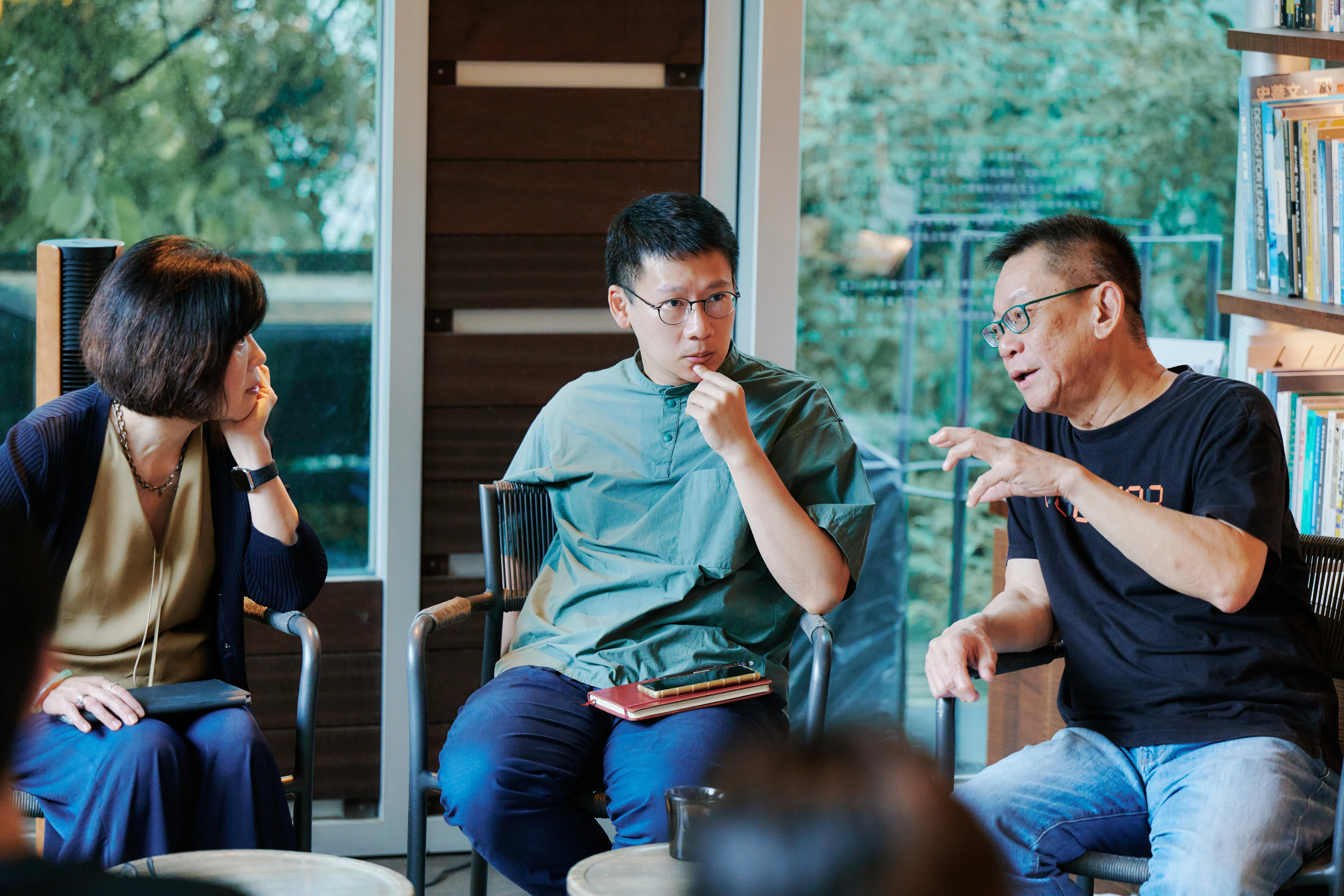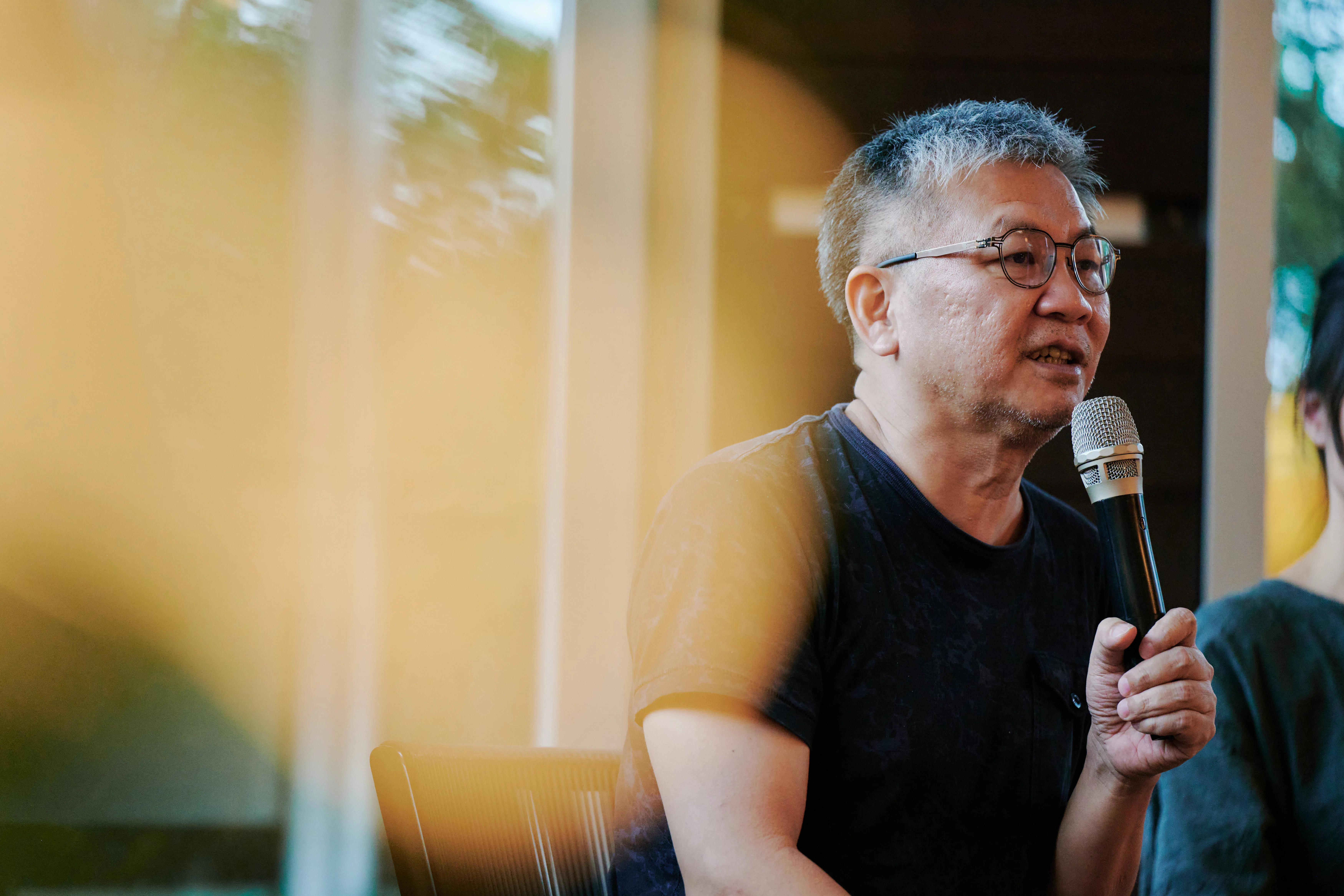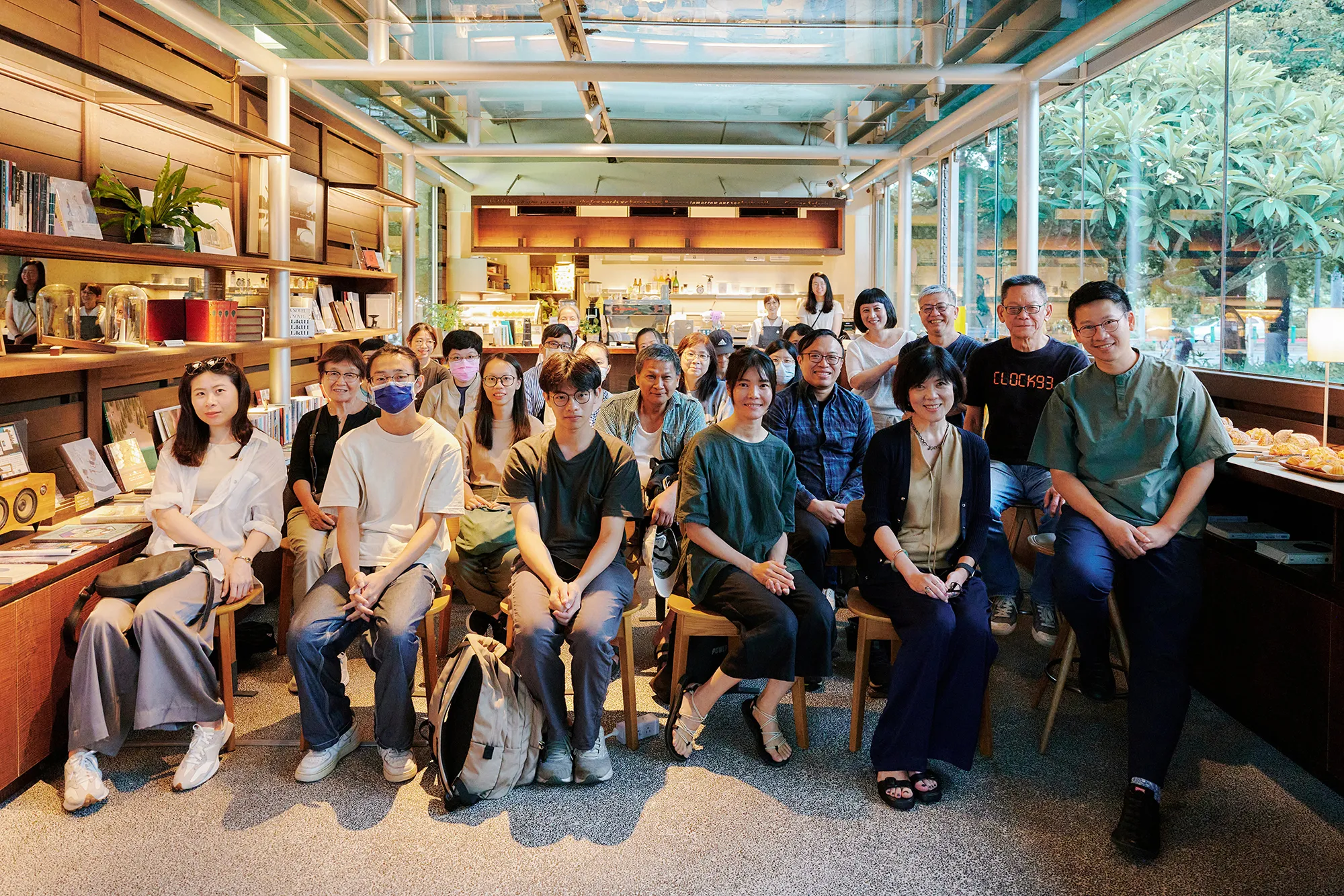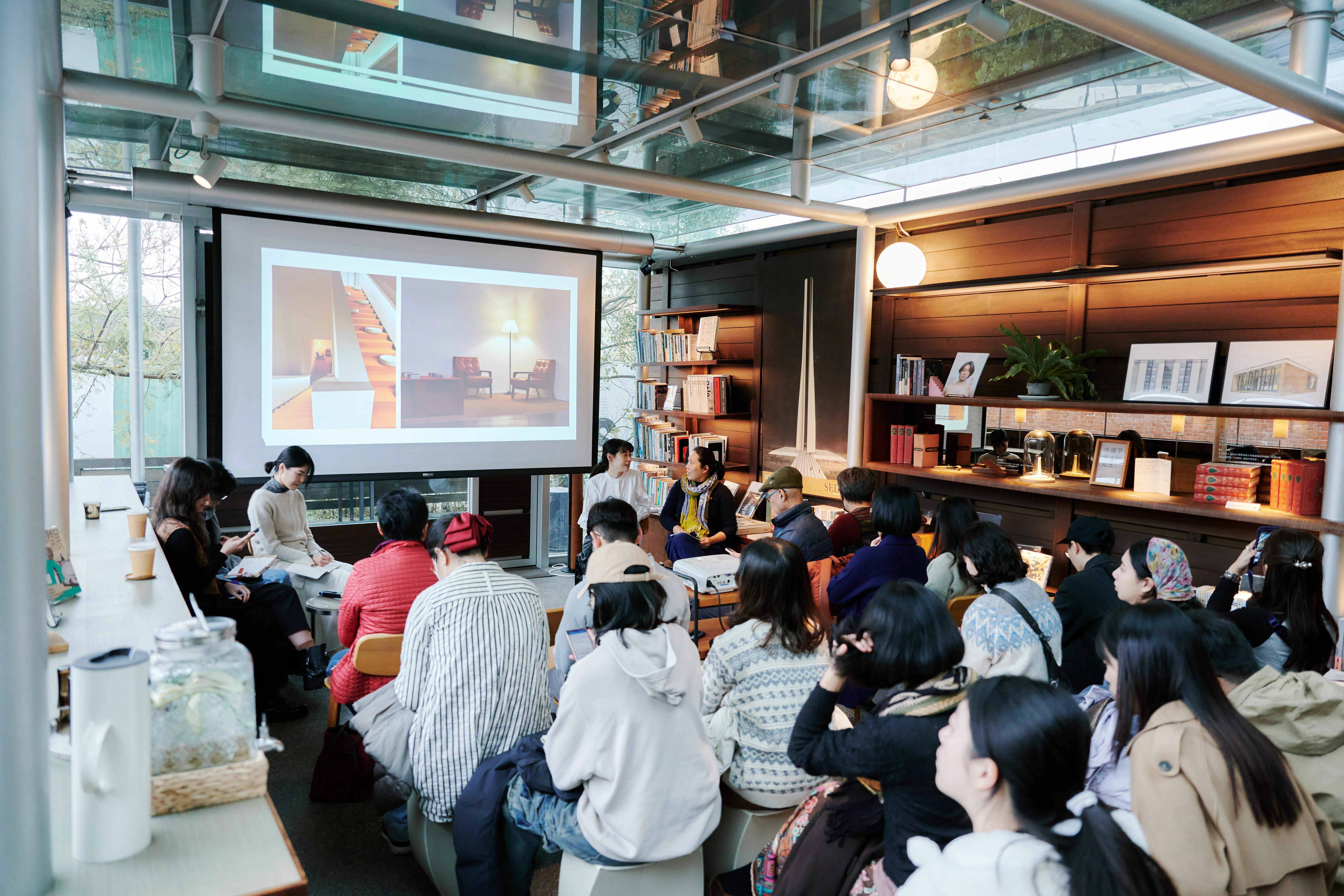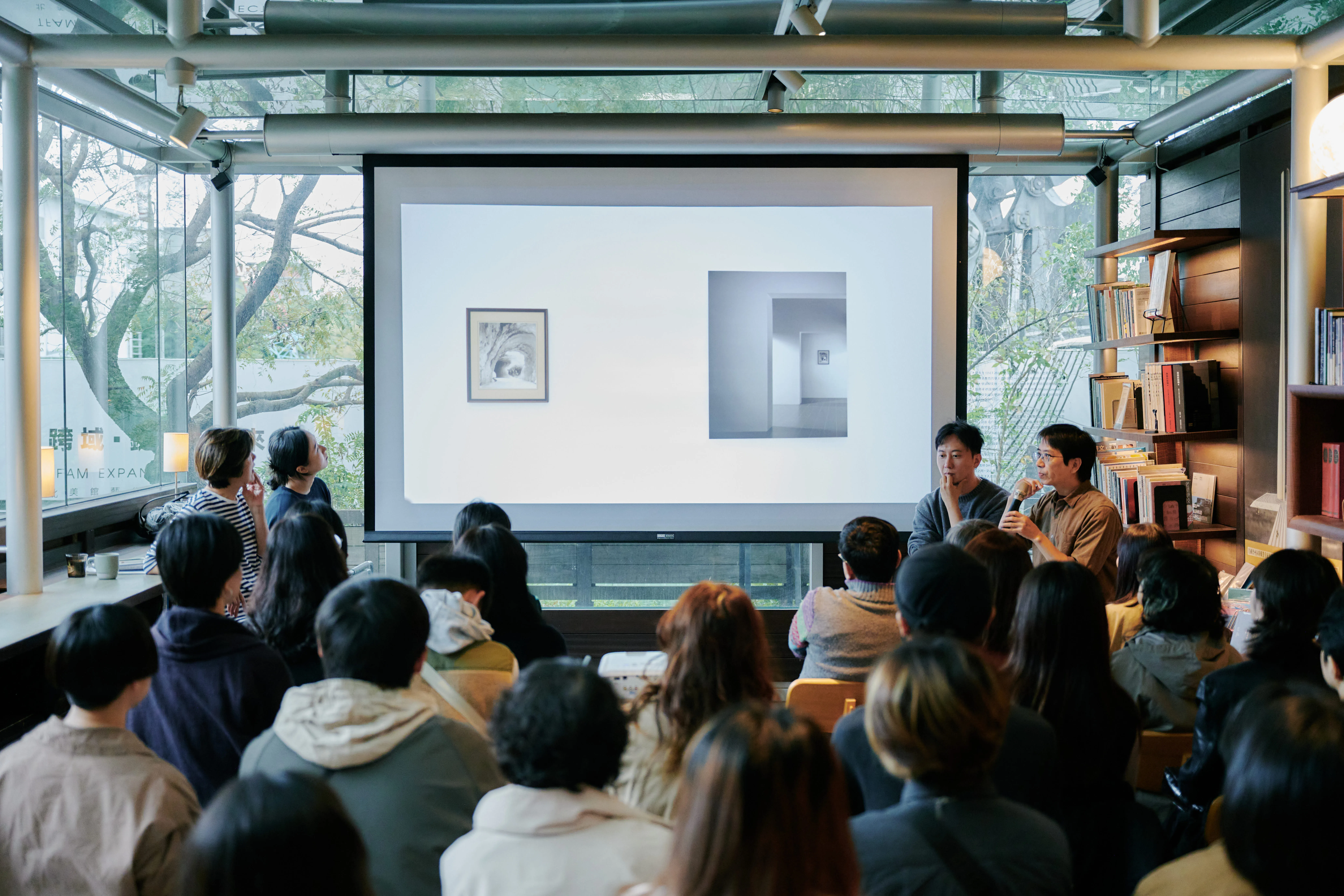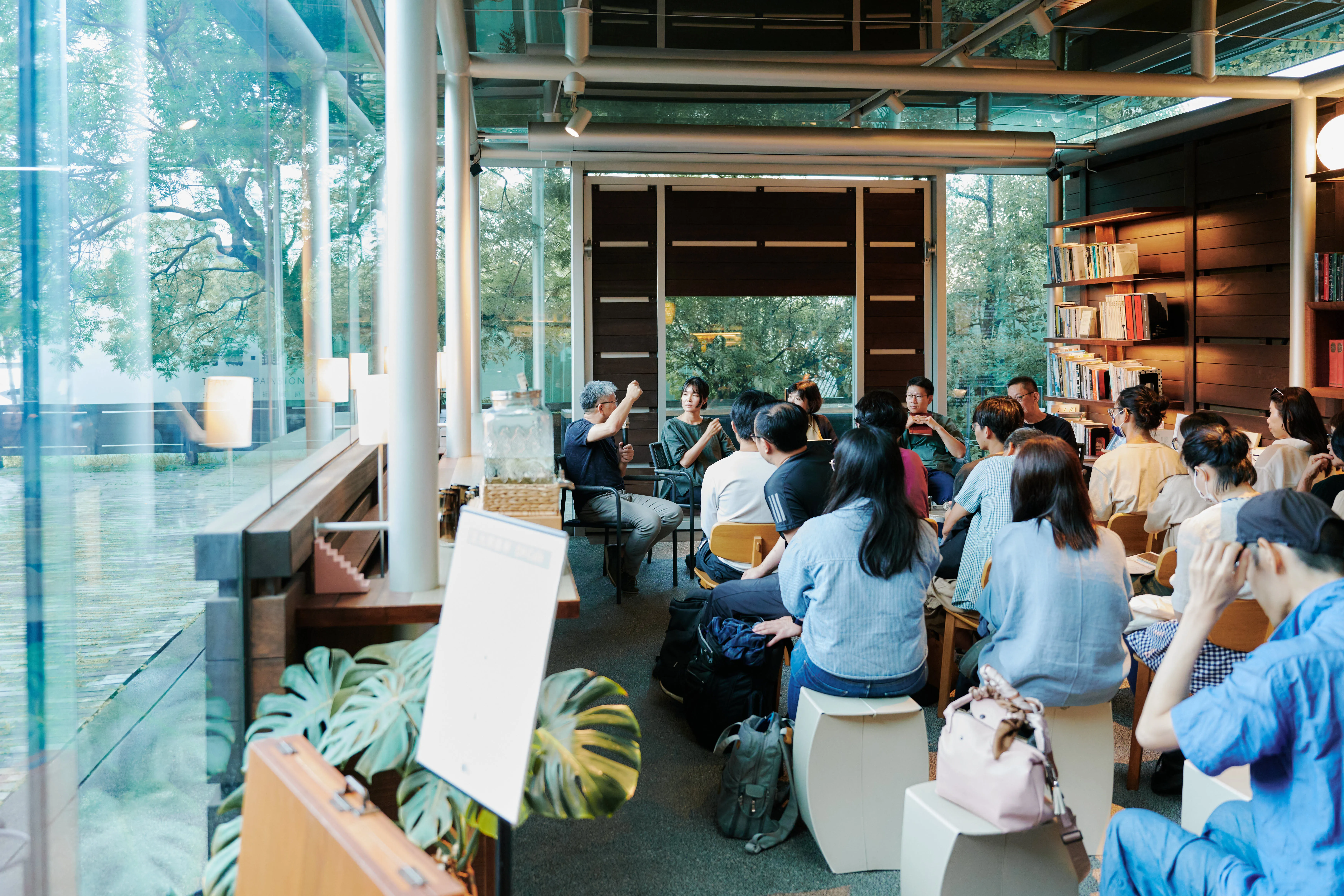
Chimera Architecture Salon | Session 4 | Meanings of Modernity: Tradition, China, and Locality
Speakers
KWANG-TING, WANG JUNHSIUNG, WANG TSEN-WING RESEARCH PLANNING TEAM “MODERN LIFE: TAIWANESE ARCHITECTURE 1949—1983”
Guest
Acting Professor of Master of Arts Management, Tainan University of the Arts Huang
Ms. Wu, Senior Lecturer, Department of Architectural Design, Yiu Ting University
Artist Guo Yu Ping
locations
Wang Daishui Shuxuan (No. 153, Section 3, Zhongshan North Road, Zhongshan District, Taipei City)
fees
$150 (Paid upon arrival, drinks and snacks are available on site)
Event Content
The final lecture of the series, “Modern Meaning: Traditional, Chinese and Indigenous”, invited two exhibitors and special guests of this exhibition to discuss: Wu Yiu Ting, Senior Lecturer in the Department of Architectural Design at the University of Practice, Yu-ping, artist Guo Yu-ping, and Professor of Social Anthropology Huang.
Wu Yiu Ting discusses the development and transformation of Taiwanese architecture from the perspective of architectural history through models, photography and writing in collaboration with students in the exhibition. Inspired by the furniture of Zhongxing New Village, artist Guo Yu-ping's exhibition, Delays and Hollows, tells the history and story of Nantou Zhongxing New Village. These works bring a different perspective to the exhibition, allowing the audience to feel the interweaving of architecture and living culture. As an exhibitor, Professor Wong looks back at the meaning and relationship between architecture and life from the point of view of sociology and anthropology. Through her perspective, viewers are expected to understand more fully how architecture reflects and influences social culture.
Event Review
Growing up in the 1980s, Professor Wu Yiu Ting shared how he was able to reach different cultures from his childhood through the emerging film media, and the architectural magazines and books his father collected at home became his first knowledge of Taiwanese architecture. It is a time when the perception of history is gradually changing, the traditional chains are beginning to unravel, but people are still wondering who they are. Professor Wu, who experienced the time personally, believes that when looking at history and architecture, people may be able to learn more about what we have to do with our lives more closely than literature. At the same time, modern students have a relative lack of physical experience in the study of architectural history, so teachers advocate the importance of visiting exhibitions and field visits.
If architecture students use models to present projections of the future, artist Guo Yu-ping is projecting the past with models. Born in Zhongxing Village and spending most of her childhood until her father retired from home, the new town house, built at the time by the provincial government, was a place where Guo Yu-ping dreamed of as a child and made no sense to her. In her exhibition, Delays and Hollows, she uses horse manure cardboard to recreate the living space in childhood memories, reproducing the details, materials, and light in the house in the form of memories, and then reproduced in the form of video recordings. Through the process of creation, the artist talks to his sense of loss, and personal sadness is also addressed when the work is completed. But rather than mourning, Guo Yu-ping said that he was not so sad, but rather letting go of the past and face the future.
As a scholar who studies social anthropology, Professor Wong Chin-yu is a great influence on society and culture in modern life. “Culture” refers to a specific group of people encompassing a multifaceted system of knowledge and behavior that adheres to this system and maintains or changes it through the practice of daily life. Therefore, the culture studied by the Institute of Anthropology is, in fact, the totality of human life. The exhibition not only presents the relationship between the social moods, lifestyles and buildings of different eras, but also systematically articulates the process of creating modern culture through a literary-like structure. Finally, Professor Huang also pointed out that one of the cultural characteristics of modern life is “self-identification,” hoping that everyone can gradually find their place after combing through different stages of history.
Maybe when the building archive is created, it's not the people who really use the building circle. But as the three guests shared, by placing history in a different social perspective in an architectural work, it is possible to more truthfully reflect the social phenomena of that era, providing historians with a more expansive narrative state. Thus, when “modern” architecture is discussed in such a diverse context in Taiwan, it becomes more than just a form, but how these elements with different historical backgrounds are combined and reconstructed to produce a building that matches the present, modern meaning can be seen.
